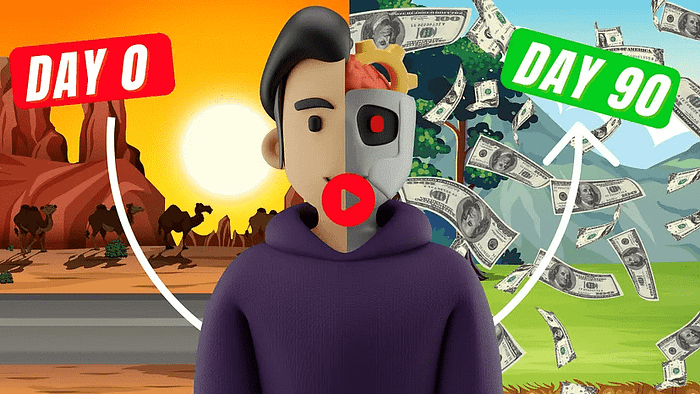How I Built 2 AI Assistants That Revolutionized My Productivity
Revolutionizing workflow efficiency with AI productivity assistants began as a personal experiment and transformed into a complete system that redefined how I manage multiple complex projects and teams. What started as a simple attempt to organize meeting notes evolved into two powerful AI assistants that now handle everything from detailed meeting analytics to comprehensive project management. The results have been nothing short of extraordinary, with a 300% increase in productive output and a dramatic reduction in administrative overhead.
Imagine having two dedicated assistants – one that perfectly captures and analyzes every meeting interaction, and another that masterfully manages all strategic initiatives. These AI productivity assistants don’t just store information; they actively process, analyze, and provide actionable insights that drive decision-making and project success. The beauty lies in their ability to adapt and learn from each interaction, becoming more valuable over time.
We strongly recommend that you check out our guide on how to take advantage of AI in today’s passive income economy.
Table of Contents
The Foundation: Smart Organization Structure
Creating effective AI productivity assistants begins with a fundamental shift in how we organize information. I discovered that the traditional folder hierarchy most professionals use actually hinders AI integration. Instead, I developed a two-pillar system that separates all content into meeting transcripts and strategic documents. This seemingly simple change revolutionized how my AI assistants process and utilize information.
The organizational structure I developed isn’t just about storing files – it’s about creating an ecosystem where AI can thrive. Each folder serves as a specialized knowledge base that feeds into its respective AI assistant. Meeting transcripts contain valuable insights about decisions, action items, and team dynamics, while strategic documents house the broader vision, plans, and tactical approaches that drive projects forward.
Building the Meeting Executive Assistant
The meeting executive assistant represents a breakthrough in how we handle meeting outcomes. This AI productivity assistant goes beyond simple transcription and summary – it actively analyzes conversation patterns, identifies key decision points, and tracks commitments made during meetings. The assistant maintains a comprehensive database of all meeting interactions, making it possible to trace the evolution of ideas and decisions across multiple sessions.
Implementation involved creating sophisticated prompts that enable the assistant to understand context and nuance. For example, when analyzing a meeting transcript, the assistant doesn’t just identify action items – it understands the underlying priorities, connects related tasks across different meetings, and maintains a clear record of ownership and deadlines. This level of comprehension makes it an invaluable tool for ensuring nothing falls through the cracks.
Creating the Strategic Project Assistant
The strategic project assistant represents the evolution of project management tools. Unlike traditional project management software that requires manual updates and monitoring, this AI productivity assistant actively analyzes project documentation, identifies potential risks, and generates comprehensive status reports automatically. It maintains a holistic view of project health while providing detailed insights into specific components.
This assistant excels at pattern recognition across multiple projects and documents. It can identify similar challenges faced in different projects, suggest solutions based on past successes, and provide early warning signals when projects show signs of veering off course. The ability to process and analyze vast amounts of strategic documentation enables it to serve as both a project manager and strategic advisor.
Platform-Specific Implementation
The implementation of AI productivity assistants varies significantly across different platforms. Gemini’s integration with Google Workspace makes it particularly effective for organizations heavily invested in Google’s ecosystem. The platform’s ability to handle large amounts of documentation and its natural language processing capabilities make it ideal for processing meeting transcripts and strategic documents.
ChatGPT’s strength lies in its strategic analysis capabilities. Through custom GPTs, it excels at providing nuanced recommendations and identifying subtle patterns in project data. The platform’s ability to generate detailed reports and actionable insights makes it particularly valuable for executive-level communication and strategic planning.
Optimizing Assistant Performance
Maximizing the effectiveness of AI productivity assistants requires ongoing refinement and optimization. The key lies in understanding that these assistants aren’t static tools – they’re dynamic systems that improve with better input and regular fine-tuning. I developed a systematic approach to prompt engineering that ensures consistent, high-quality outputs while maintaining flexibility for different use cases.
Regular performance reviews and adjustments help maintain optimal assistant functionality. This includes analyzing output quality, refining prompt structures, and expanding the assistants’ capabilities based on emerging needs. The goal is to create a system that not only maintains high performance but continues to evolve and improve over time.
Integration and Workflow Automation
Seamless integration with existing workflows proves crucial for successful implementation. The AI productivity assistants work in harmony with current tools and processes, enhancing rather than disrupting established workflows. This integration extends to popular platforms like Slack, email clients, and project management tools, creating a cohesive productivity ecosystem.
Automation plays a central role in maximizing the assistants’ impact. Through strategic use of webhooks and APIs, the system automatically processes new meeting transcripts, updates project documentation, and generates regular reports without manual intervention. This automation ensures consistent usage and maintains a reliable information flow between different components of the system.
Future Enhancements and Possibilities
The potential for AI productivity assistants continues to expand with advancing technology. Future developments will likely include enhanced natural language processing capabilities, improved context understanding, and more sophisticated pattern recognition algorithms. These advancements will enable the assistants to provide even more valuable insights and recommendations.
The integration of machine learning models will allow for more personalized assistance, adapting to individual work styles and preferences. Additionally, improvements in automated documentation updating and real-time collaboration features will further streamline workflow processes and team coordination.
Conclusion
The implementation of AI productivity assistants has fundamentally transformed how I approach work and project management. These tools have evolved beyond simple automation to become integral components of daily operations, providing invaluable insights and maintaining perfect documentation without manual intervention.
The future of productive work lies in effectively leveraging AI assistants, and the potential for further advancement remains vast. As these tools continue to evolve, they will undoubtedly play an increasingly central role in shaping how we work and manage complex projects.

We strongly recommend that you check out our guide on how to take advantage of AI in today’s passive income economy.




